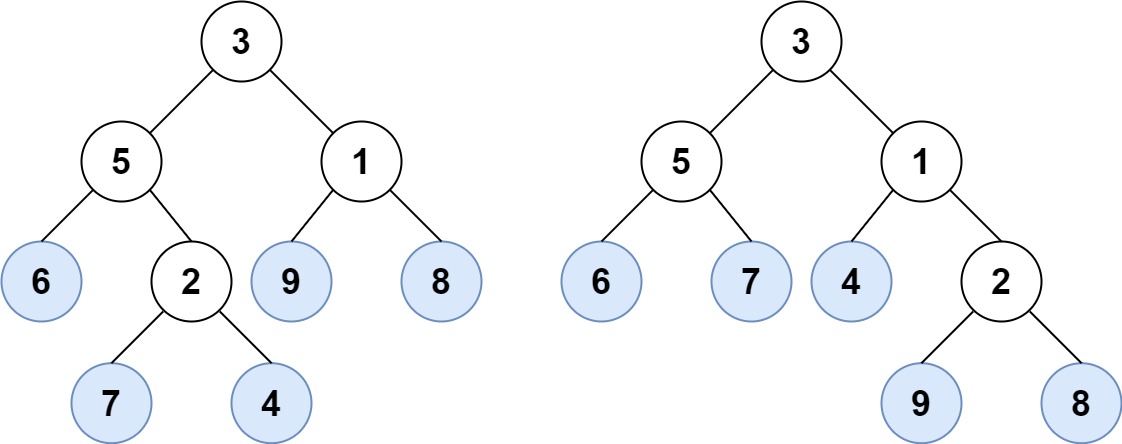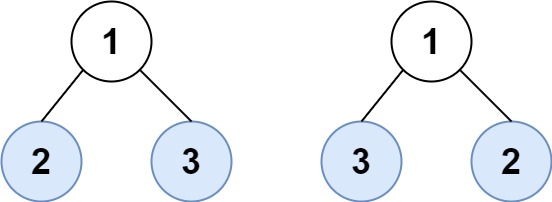872. Leaf-Similar Trees
Consider all the leaves of a binary tree, from left to right order, the values of those leaves form a leaf value sequence .

For example, in the given tree above, the leaf value sequence is (6, 7, 4, 9, 8).
Two binary trees are considered leaf-similar if their leaf value sequence is the same.
Return true if and only if the two given trees with head nodes root1 and root2 are leaf-similar.
Example 1:

Input: root1 = [3,5,1,6,2,9,8,null,null,7,4], root2 = [3,5,1,6,7,4,2,null,null,null,null,null,null,9,8]
Output: trueExample 2:
Input: root1 = [1], root2 = [1]
Output: trueExample 3:
Input: root1 = [1], root2 = [2]
Output: falseExample 4:
Input: root1 = [1,2], root2 = [2,2]
Output: trueExample 5:

Input: root1 = [1,2,3], root2 = [1,3,2]
Output: falseConstraints:
- The number of nodes in each tree will be in the range
[1, 200]. - Both of the given trees will have values in the range
[0, 200].
# @lc code=start
using LeetCode
function leaf_similar(root1::TreeNode{V}, root2::TreeNode{V})::Bool where {V}
leaves1 = V[]
leaves2 = V[]
find_leaves!(root1, leaves1)
find_leaves!(root2, leaves2)
return leaves1 == leaves2
end
function find_leaves!(t::TreeNode, leaves)
if isnothing(t.left) && isnothing(t.right)
push!(leaves, t.val)
else
find_leaves!(t.left, leaves)
find_leaves!(t.right, leaves)
end
end
find_leaves!(::Nothing, leaves) = nothing
# @lc code=endfind_leaves! (generic function with 2 methods)
This page was generated using DemoCards.jl and Literate.jl.



